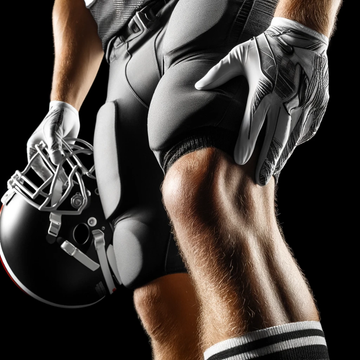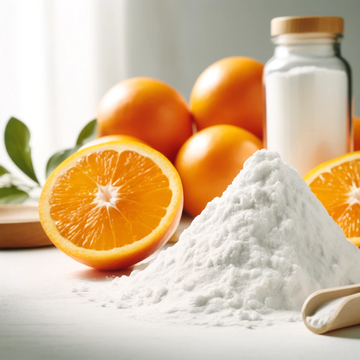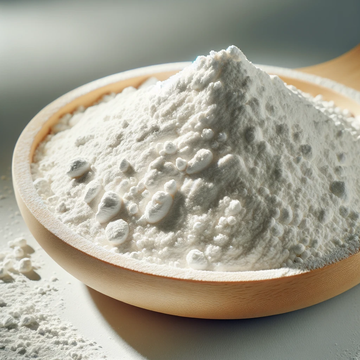ACL injuries are a common yet significant setback, particularly for athletes and active individuals. The anterior cruciate ligament (ACL) plays a crucial role in stabilizing the knee, and its injury can disrupt daily activities and sports participation. Approximately 150,000 ACL tears happen every year, highlighting the importance of effective recovery to regain full function and prevent further complications. This article aims to provide a comprehensive guide to ACL recovery, from understanding the injury to resuming normal activities.
Understanding ACL Injuries
The ACL is a critical ligament located in the center of the knee, connecting the femur (thigh bone) to the tibia (shin bone). It helps control the forward and backward movement of the knee joint. ACL injuries often occur during activities that involve sudden stops, jumps, or changes in direction, such as soccer, basketball, and skiing. Symptoms include a loud "pop" sound at the time of injury, severe pain, swelling, instability, and difficulty bearing weight on the affected leg. Diagnosis typically involves a physical examination and imaging tests like MRI or X-rays to confirm the extent of the damage.
Initial Treatment and Management
Immediate management of an ACL injury is crucial to reduce swelling and pain. The RICE method (Rest, Ice, Compression, Elevation) is the standard initial treatment:
- Rest: Avoid putting weight on the injured knee.
- Ice: Apply ice packs for 20 minutes every few hours to reduce swelling.
- Compression: Use an elastic bandage to compress the knee and limit swelling.
- Elevation: Keep the leg elevated to minimize swelling.
It's essential to seek medical attention promptly. A healthcare professional can provide a thorough assessment, prescribe pain relief medications, and recommend further imaging tests to determine the severity of the injury.
Treatment Options
Treatment for ACL injuries depends on the severity of the injury, the patient’s activity level, and overall health. There are two primary treatment options: non-surgical and surgical.
-
Non-Surgical Treatment: This approach is generally suitable for individuals with partial ACL tears or those who lead a relatively sedentary lifestyle. Non-surgical treatment focuses on physical therapy to strengthen the surrounding muscles, improve knee stability, and restore range of motion. Bracing may also be recommended to support the knee during physical activities.
-
Surgical Treatment: ACL reconstruction surgery is often recommended for complete tears, especially in active individuals or athletes. The surgery involves replacing the torn ligament with a graft, typically taken from the patient’s hamstring or patellar tendon. Factors influencing the choice of treatment include the patient’s age, activity level, and overall knee stability.
Post-Surgery Recovery
Post-surgery care is crucial for a successful recovery. Immediately after surgery, pain management is a priority. Patients are typically prescribed pain relief medications and may use a continuous passive motion (CPM) machine to keep the knee moving gently. It's essential to follow the surgeon's post-operative instructions, which may include:
- Rest and limited weight-bearing: Use crutches to avoid putting weight on the knee initially.
- Wound care: Keep the surgical site clean and dry to prevent infection.
- Follow-up appointments: Regular check-ups with the surgeon to monitor healing and progress.
Rehabilitation Process
Rehabilitation is a critical component of ACL recovery. The process is typically divided into three phases:
-
Early Phase (Weeks 1-6):
- Focus on reducing swelling and regaining knee range of motion.
- Gentle range of motion exercises and isometric strengthening exercises.
- Gradual increase in weight-bearing as tolerated.
-
Mid-Phase (Weeks 6-12):
- Emphasis on regaining full range of motion and improving muscle strength.
- Progressive strengthening exercises, including closed-chain exercises like squats.
- Balance and proprioception training to enhance knee stability.
-
Late Phase (Months 3-6+):
- Advanced strengthening exercises and functional training.
- Sport-specific drills and exercises to prepare for a return to activities.
- Continued focus on balance, agility, and coordination.
Physical therapy plays a vital role in each phase of rehabilitation. A physical therapist designs a personalized rehabilitation program tailored to the patient’s needs and goals.
Nutrition and Supplements
A balanced diet is essential for optimal recovery. Nutrients that support healing include:
- Protein: Crucial for muscle repair and tissue healing. Include lean meats, fish, eggs, and plant-based proteins.
- Vitamin C: Supports collagen formation and immune function. Found in citrus fruits, strawberries, and bell peppers.
- Calcium and Vitamin D: Important for bone health. Sources include dairy products, leafy greens, and sunlight exposure.
- Collagen: Supports ligament repair and overall joint health. For more information on how collagen helps recover from injuries, refer to this article and this article.
Supplements may also aid recovery. Collagen supplements can support ligament repair, while omega-3 fatty acids have anti-inflammatory properties that can reduce swelling. Staying hydrated is equally important, as dehydration can hinder the healing process.
Mental and Emotional Recovery
The psychological impact of an ACL injury can be significant. Feelings of frustration, anxiety, and depression are common. Strategies to maintain a positive mindset include:
- Setting realistic goals: Break down recovery into manageable milestones.
- Staying connected: Lean on family, friends, and support groups for encouragement.
- Mental exercises: Techniques like visualization and positive self-talk can enhance motivation and focus.
It's important to address mental health as part of the recovery process. Working with a sports psychologist or counselor can provide additional support.
Returning to Activity
Returning to sports and physical activities requires careful planning and patience. Criteria for a safe return include:
- Full range of motion in the knee
- Strength in the affected leg comparable to the uninjured leg
- Ability to perform sport-specific movements without pain or instability
Gradual progression is key. Start with low-impact activities and slowly increase intensity. Collaborate with trainers and therapists to ensure a safe and effective transition back to full activity.
Prevention Tips
Preventing future ACL injuries involves strengthening the knee and improving overall body mechanics. Key exercises include:
- Strengthening exercises: Focus on the quadriceps, hamstrings, and glutes.
- Balance training: Exercises like single-leg stands improve proprioception.
- Flexibility exercises: Stretching the muscles around the knee to maintain mobility.
Proper technique in sports and physical activities is crucial. Wearing supportive gear, such as knee braces and proper footwear, can also help prevent injuries.
Conclusion
Recovering from an ACL injury is a challenging but achievable journey. By following a structured recovery plan, incorporating proper nutrition, addressing mental health, and taking preventive measures, individuals can regain full function and return to their favorite activities. Commitment to the recovery process and support from healthcare professionals, family, and friends play vital roles in achieving a successful outcome. Remember, patience and perseverance are your best allies on the road to recovery.





